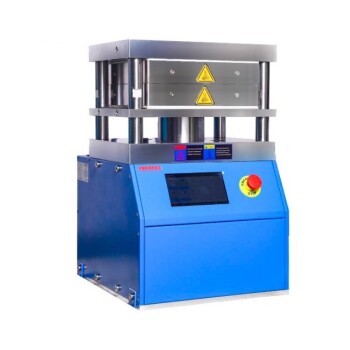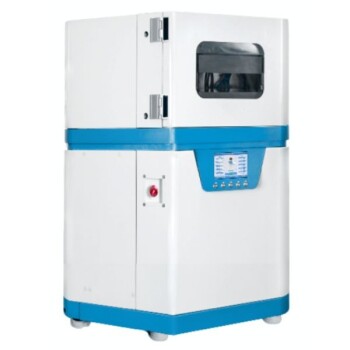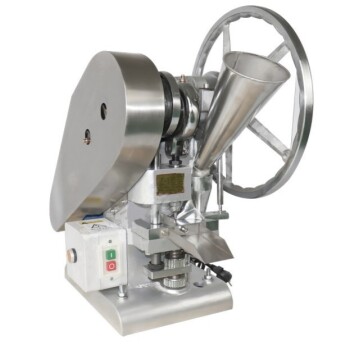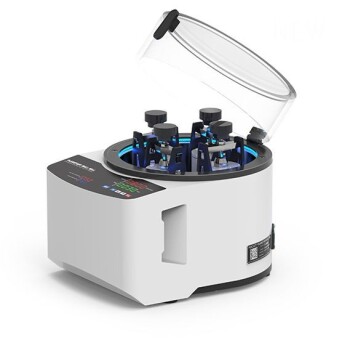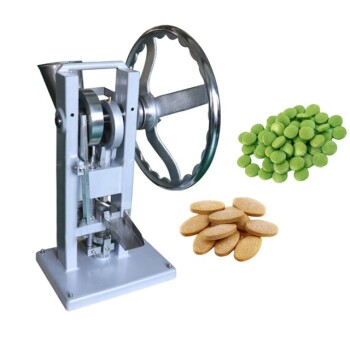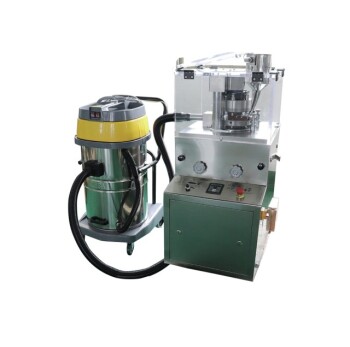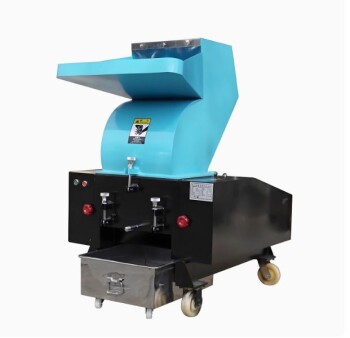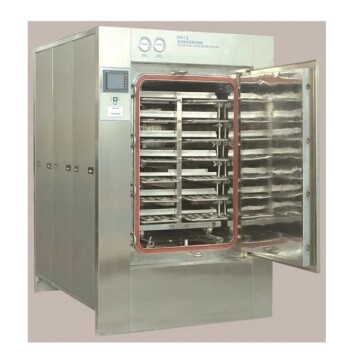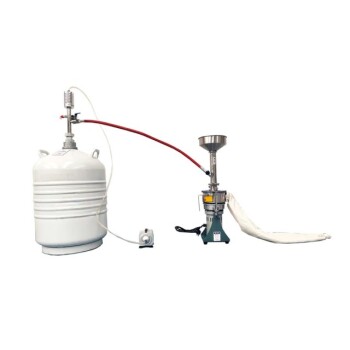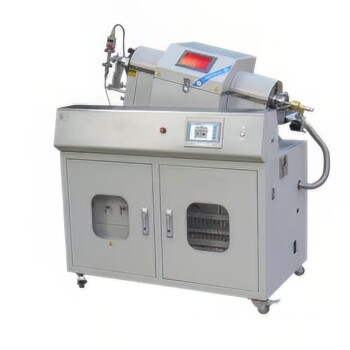In short, yes. High-quality wood pellets are predominantly made from compressed sawdust and other wood byproducts like shavings and chips from sawmills. However, the raw material is just the starting point. The critical transformation from loose dust into a dense, efficient fuel relies on an engineering process involving intense heat and pressure, which fundamentally changes the material's properties.
The key insight is that the term "sawdust" can be misleading. A premium wood pellet is not simply swept-up floor waste; it is an engineered fuel created from clean, raw wood fiber that is dried, refined, and compressed to unlock its maximum energy potential.

From Sawmill Byproduct to Engineered Fuel
Understanding how a pellet is made reveals why the source material's form (sawdust) is less important than its quality and the manufacturing process itself. It's a journey of purification and densification.
The Source Material: More Than Just Sawdust
The primary feedstock for wood pellets is clean byproducts from the timber industry. This includes sawdust, wood chips, and shavings.
Crucially, premium pellet manufacturers use "virgin" wood fiber. This means it comes directly from debarked logs being processed and has not been treated, painted, glued, or contaminated in any way.
The Drying and Grinding Process
The raw wood fiber is first dried in large industrial dryers to a precise, low moisture content, typically between 6-10%. This step is critical, as lower moisture means higher burning efficiency.
After drying, the material is fed into a hammer mill. This machine grinds everything down to a uniform, fine, and consistent particle size, which is essential for proper pellet formation.
The Magic of Lignin: Compression and Extrusion
This is the core of the transformation. The refined wood powder is forced through a die using rollers that generate immense pressure and heat.
This process heats the wood fiber enough to soften its natural lignin, which is a polymer found in the cell walls of wood. The liquified lignin acts as a natural glue, binding the wood particles together as they are extruded through the die holes.
No artificial glues or binders are needed in a high-quality pellet. The wood's own lignin does all the work, creating a dense, hard, and stable fuel pellet as it cools.
What Distinguishes a High-Quality Pellet?
Not all pellets are created equal. The "sawdust" from a treated lumber yard is vastly different from the virgin fiber used in premium pellets. Key indicators of quality are printed on the bag.
Ash Content
This is one of the most important metrics. Low ash content (ideally under 1%, and as low as 0.5% for premium grades) means the pellet is made from clean wood fiber with very little bark or other contaminants. High ash leads to more frequent cleaning of your stove or grill.
Moisture Content
Lower moisture means more of your money goes toward creating heat, not boiling water. Look for a moisture content below 10%. This results in a hotter, more efficient burn.
Hardness and Durability
Well-made pellets are hard, shiny, and do not crumble easily. Poorly compressed pellets create excessive dust, or "fines," in the bag, which can clog the auger that feeds your appliance and cause performance issues.
Wood Type: Hardwood vs. Softwood
For heating, softwoods like pine or fir are often preferred. They contain more resins (and lignin), which gives them a higher energy content (BTUs) and helps them burn very cleanly with low ash.
For grilling and smoking, 100% hardwood pellets (like hickory, oak, or apple) are used for the distinct flavor profiles they impart to food.
Understanding the Trade-offs
Choosing the right pellet requires understanding the compromises between cost and quality.
The Myth of Fillers
Premium pellets are 100% wood. The term "filler" is often misused; some manufacturers may blend wood species (e.g., alder with oak) for cost or performance reasons, but they should not contain non-wood additives. Always check for "100% wood" on the packaging.
The Problem with Bark
While bark is a natural part of a tree, it contains more silica and minerals than the wood fiber itself. Pellets made with a high percentage of bark will have a significantly higher ash content, creating more maintenance work.
Storage is Critical
Even the best pellets can be ruined by improper storage. If they absorb moisture from the air, they will swell, lose their density, and burn poorly. Always store pellets in a dry, indoor location.
Making the Right Choice for Your Goal
Your intended use case should dictate your choice, moving your focus from just the price to the overall value.
- If your primary focus is home heating: Look for pellets certified by the Pellet Fuels Institute (PFI) with an ash content below 1% for maximum heat output and minimal cleaning.
- If your primary focus is grilling or smoking: Choose 100% species-specific hardwood pellets with no added oils to ensure a pure, authentic smoke flavor.
- If your primary focus is budget: Be aware that the cheapest pellets may have higher ash and lower heat value, potentially leading to more maintenance and higher fuel consumption that negates the initial savings.
By seeing pellets as an engineered fuel rather than just compressed dust, you can select the right product for optimal performance and value.
Summary Table:
| Key Quality Indicator | What to Look For | Why It Matters |
|---|---|---|
| Ash Content | Below 1% (0.5% for premium) | Less maintenance, cleaner burn |
| Moisture Content | Below 10% | Higher heat output, greater efficiency |
| Hardness & Durability | Hard, shiny, low dust | Prevents clogging, consistent feed |
| Wood Type | Softwood for heat, hardwood for flavor | Optimized for intended use (BTUs or taste) |
Ready to Optimize Your Fuel or Material Processing?
At KINTEK, we specialize in the precise thermal processing and material transformation equipment that powers industries like pellet manufacturing. Whether you're developing a new fuel product or need reliable lab equipment to test material properties, our solutions deliver the control and consistency you need.
We help you:
- Achieve precise drying and thermal treatment for uniform results.
- Test and validate material durability and composition.
- Scale your processes from lab to production with confidence.
Let's engineer your success. Contact our experts today to discuss how KINTEK's lab equipment and consumables can support your laboratory's goals.
Visual Guide
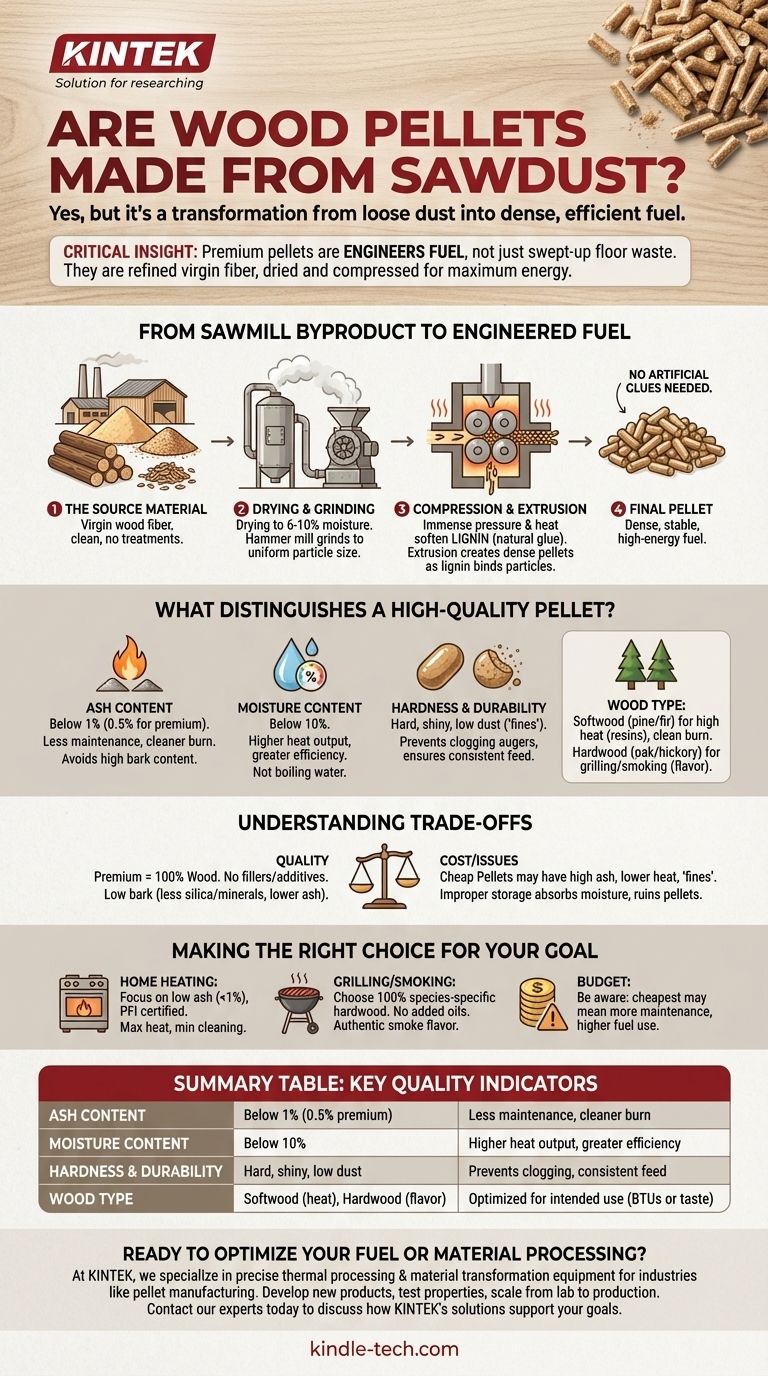
Related Products
- Manual Cold Isostatic Pressing Machine CIP Pellet Press
- Heated Hydraulic Press Machine with Integrated Manual Heated Plates for Lab Use
- Automatic Heated Hydraulic Press Machine with Heated Plates for Laboratory Hot Press 25T 30T 50T
- Double Plate Heating Press Mold for Lab
- Single Punch Electric Tablet Press Machine Laboratory Powder Tablet Punching TDP Tablet Press
People Also Ask
- What is a cold isostatic press? Achieve Uniform Powder Compaction for Complex Parts
- What is the cold isostatic process? Achieve Uniform Density in Complex Powder Parts
- What is the process of isostatic graphite? A Guide to High-Performance, Uniform Material Creation
- What is cold isostatic pressure? Achieve Uniform Density for Complex Powder Parts
- What is cold isostatic pressing? Achieve Uniform Density for Complex Parts


